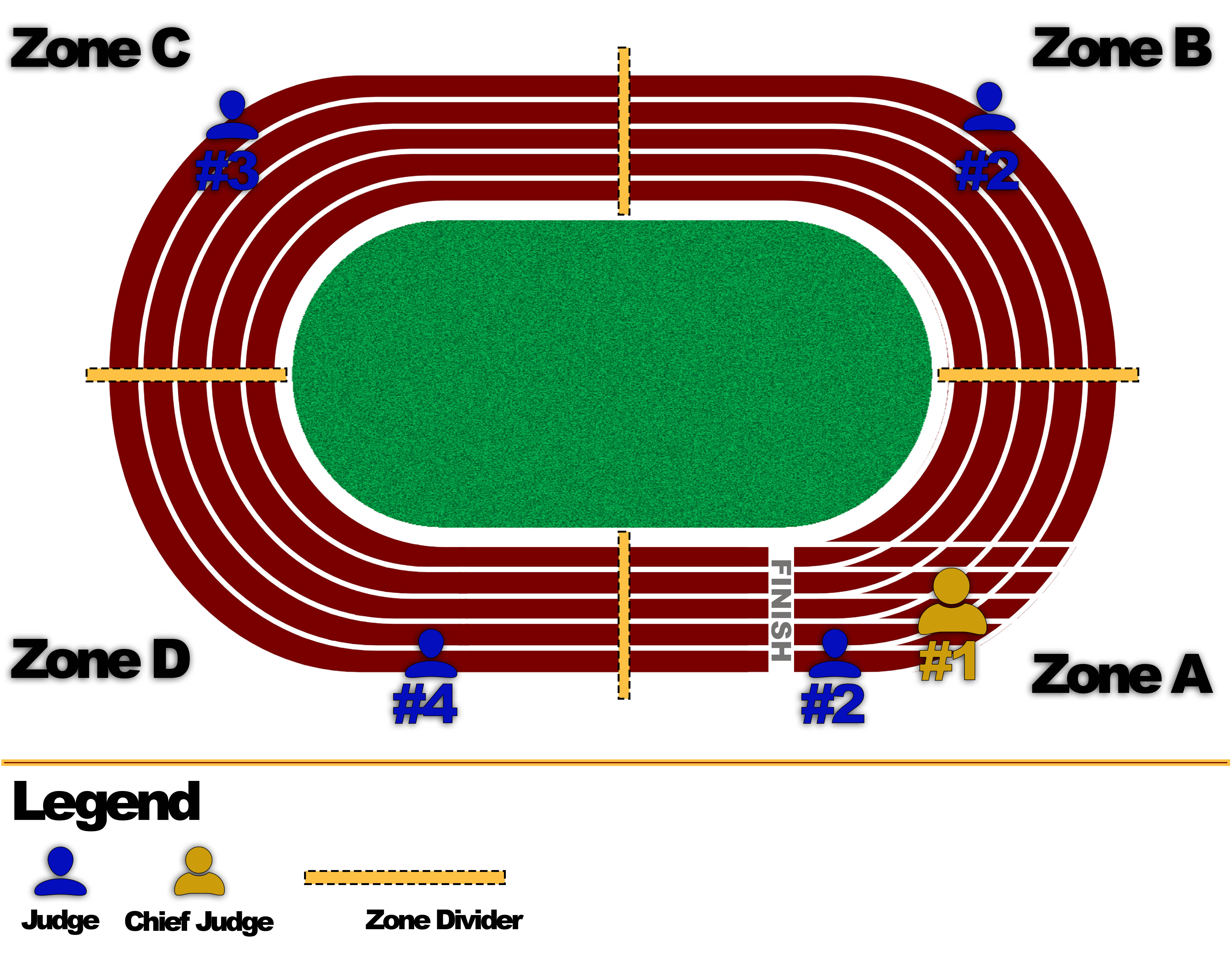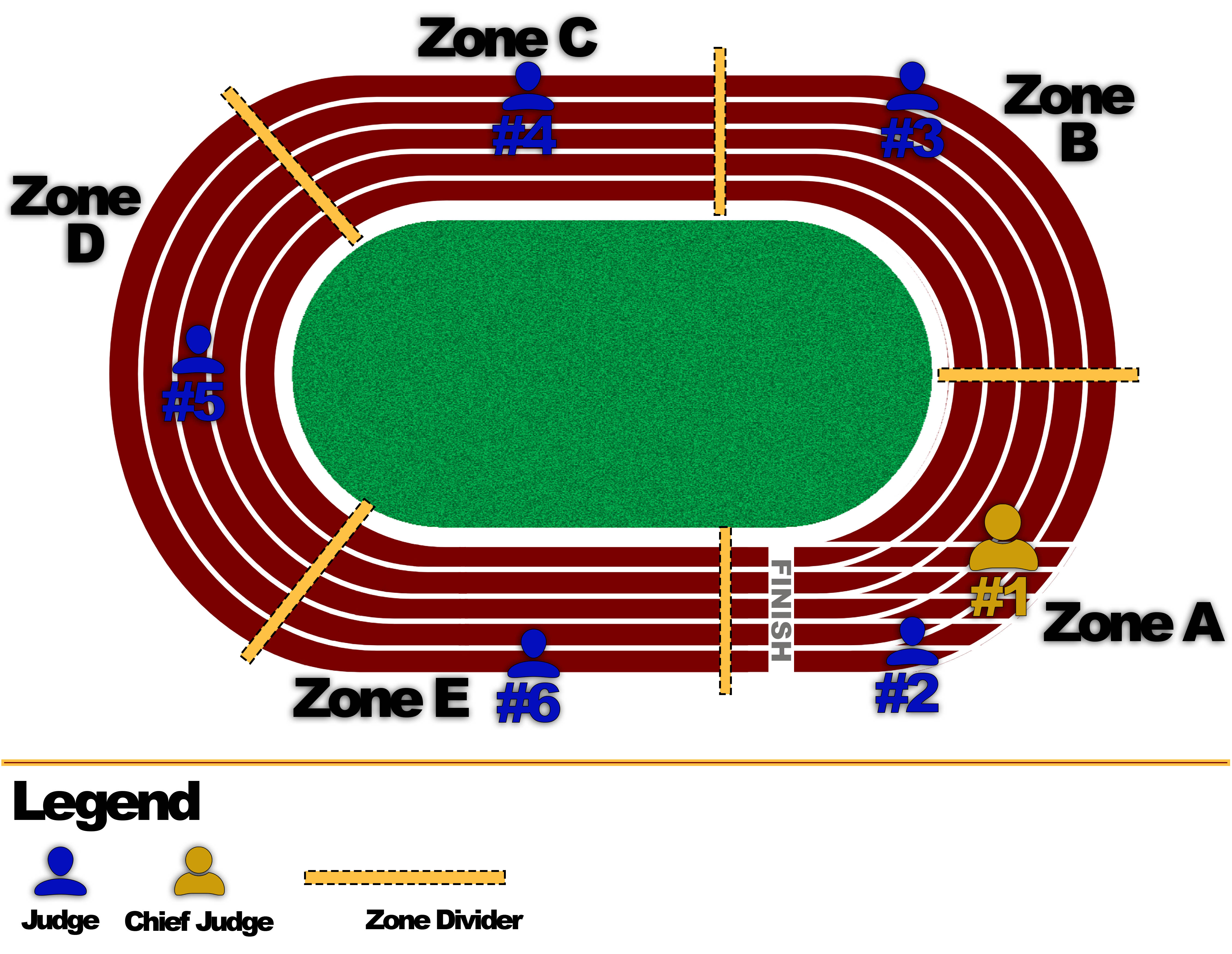How to Officiate Race Walking - Track vs Road Events
Track Events
When you are judging on a track and in the United States there are five judges including a chief judge. The track is divided into four sections or zones. An easy way to divide it is to take the middle of the of the final straightaway and go to the middle of the first turn. There is no rule on how you have to label the zones, but using letters helps to differentiate the labels from Judge #s. We can therefore label the first zone, Zone A. Then the second zone comes out of the turn onto the straightaway and is called Zone B. Similarly, you divide the track for Zones C and D.
Each judge is assigned a number by the Chief Judge. In a short race, the judges may stay in the same zone for the entire race. However, in a longer race, they typically switch zones on predetermined intervals. The chief judge is not assigned a zone. Instead, the chief judge rotates clockwise around the track at their leisure. Individual judge rotations can occur every thirty minutes, or even every hour. The decision is the chief judge’s. Here’s a sample rotation schedule for a track with 4 zones and 5 judges including the chief judge. The rotation interval will be 30 minutes. The race is a 20K with a 2 hour cap.
| Judge | Zone A | Zone B | Zone C | Zone D |
| 2 | 10:00 AM | 10:30 AM | 11:00 AM | 11:30 AM |
| 3 | 11:30 AM | 10:00 AM | 10:30 AM | 11:00 AM |
| 4 | 11:00 AM | 11:30 AM | 10:00 AM | 10:30 AM |
| 5 | 10:30 AM | 11:00 AM | 11:30 AM | 10:00 AM |
At the end of the race, it’s important for multiple judges to be along the final straightaway and near the finish line. There is already one judge assigned to this zone. The chief judge should join them, as well as one other to make sure three judges are watching the final straightaway on the track.


Road Course
On a road course you can have up to eight judges including the chief judge, which might be the ninth judge. It depends upon the size of the course. If you have a one a one kilometer course you really don't want to put nine judges out there. Like on the track, the course is broken into zones and judges are assigned to them. In short races, like a 5K or shorter, the judges will likely not rotate, but in a longer race, they will rotate like on a track.
Rotation is particularly important on the road, so that a judge sees the walkers under all conditions. Cones, turns, hills, and much more can all cause a judge to evaluate a race walker differently. Internationally, there are six judges but the chief judge does not judge during the race only judges the last 100 meters of the race.

Next Lesson: Filling Out a Tally Sheet